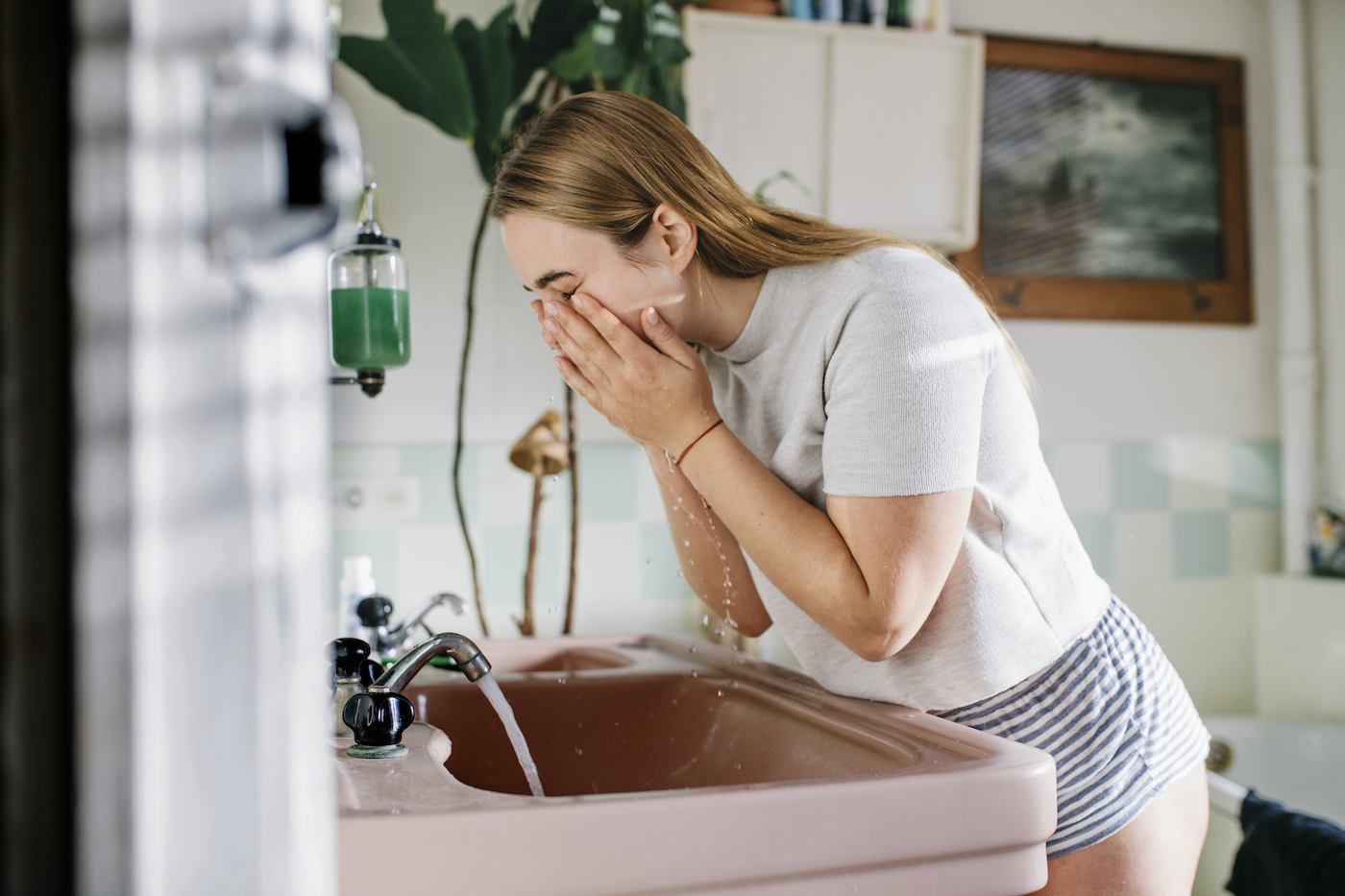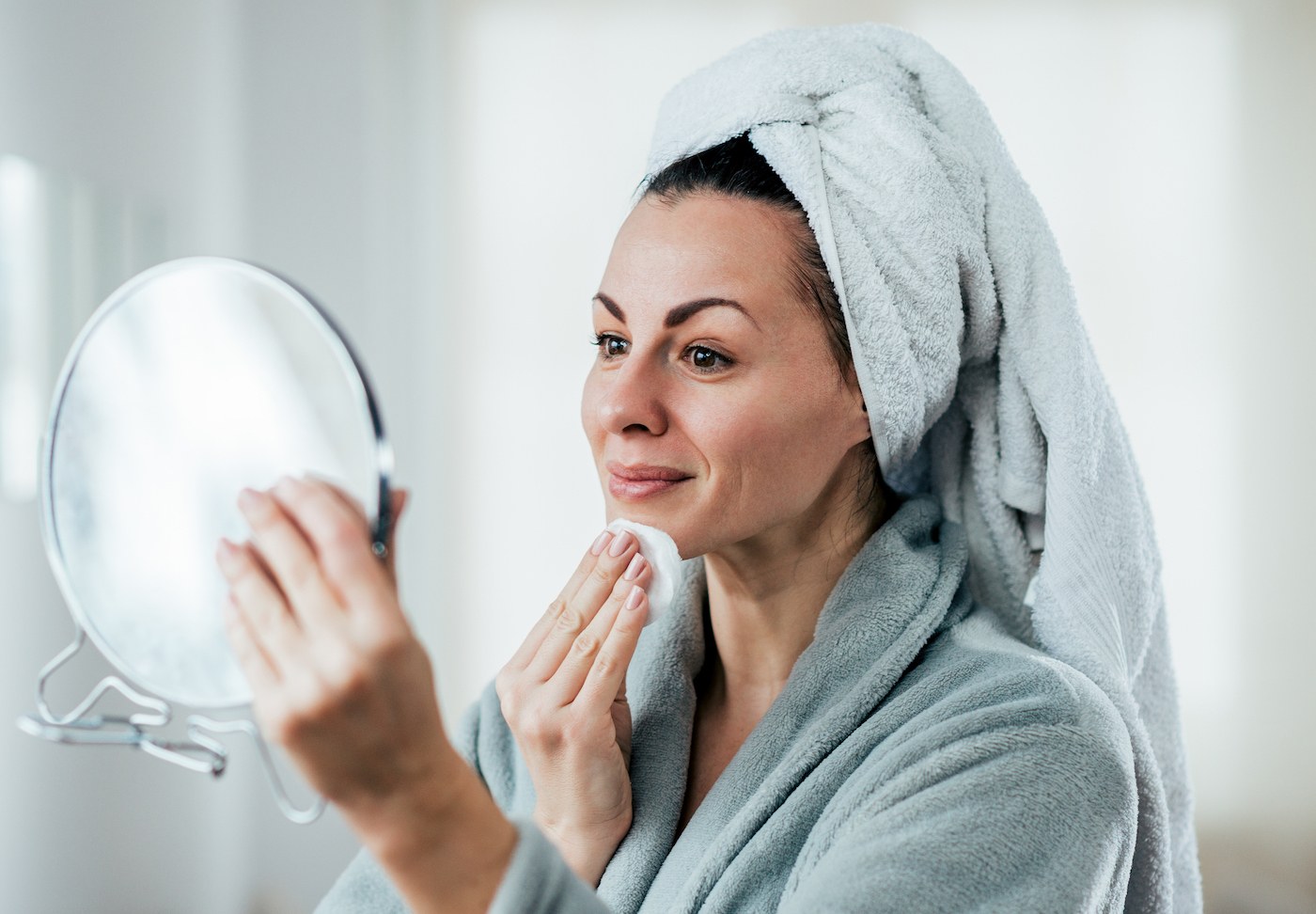
September 17, 2019 at 07:44PM by CWC
At first glance, washing your face seems like the most straightforward step in your skin-care routine. After all, it’s just a quick, 60-second trip to the sink, which is easy enough, right? Not so fast. In a not-at-all scientific Instagram poll we put up last week, 55 percent of respondents said they were confused about cleansing, and we’ve gotta say: us too!
To help clear up the confusion around skin-care’s sudsiest step, longtime publicist and beauty smarty-pants Emily Parr decided to start HoliFrog, a new line of four clean cleansers: a balm, a milk, and a gel, and an acid-spiked wash. “Washing your face isn’t the sort of thing you overthink, but we found that there needed to be much more thought put into this category than what was currently being offered,” she says. “Washing your face is a skin-care non-negotiable, and not doing so properly is like eating a salad without washing the leaves.”
While Parr saw a lot of innovation in serums, creams, and masks, she felt like the cleansing market was made up of water and surfactants with “a few key ingredients sprinkled in for good measure.” With the right cleanser in hand, skin should feel like a”fresh canvas” on which to apply the rest of your routine. So to turn it from a got-to-do skin-care step into a can’t-wait-to-try-it step, here she answers the most common questions we get from you, our readers.
Real talk: Can I just use regular old soap to wash my face and call it a day?
I’d prefer not. Traditional bars of soap (you know the ones I am referring to) are an acid mantle’s worst nightmare. Your acid mantle is your skin’s protective layer. If you disrupt it, it will fight back in the form of irritation, a la dryness, redness, or acne. Our skin’s pH—which, for healthy skin, is between 4.5 and 5.5—is maintained by the acid mantle. Traditional soap’s pH is at about 9, and even pH-balanced soaps come in at around a seven, which is still too alkaline for healthy skin.
What’s the most common cleanser myth that you’ve come across that you’d like to clear up?
ADVERTISEMENT
ADVERTISEMENTKate Spade Autumn/Winter Sale |
I want to cringe when people think that if a cleanser is not foaming up, it’s not working. Here’s the reality: the higher the foam, the more surfactant. Surfactant is short for “surface active agent,” and these degrease, emulsify oils, and dissolve dirt, allowing them to be washed away. The more surfactant in a cleanser, the more it’s stripping your skin.
What’s the difference between a cream, oil, foam, and gel cleanser? How do I figure out which one to use?
I like to choose my cleanser by situation—we call it ‘situational cleansing.’ For example, when you wake up in the morning, a milk or cream cleanser is a great choice, because you’ve been sleeping all night, so you really just want to refresh your skin. Something light and hydrating is a great option for that specific situation. At night, you have much greater obstacles in the form of dirt, SPF, makeup, and environmental pollutants, so more elbow grease is required. I like to double cleanse with a balm (oil-based cleanser) and follow it up with a gel for the encore. The balm will emulsify and whisk away surface grime. Then a gel like Holifrog Superior Omega Nutritive Gel Wash ($36) or Holifrog Shasta AHA Refining Acid Wash ($38) will oust any clingy residue.
What’s the deal with secondary cleanses? Do I need to do them?
If you’re wearing makeup, double cleansing should be on your program at night. Massage an oil-based cleanser to dissolve away all the surface grime, like makeup and oil. Pores can be tricky to clean because they hoard pretty much anything that comes into contact with your face. So at night, that’s why it’s great to follow up with a secondary cleanser—I use either a gel or, every once in a while, a scrub—to ensure you’ve lifted away all that gunk to keep your pores happy.
What’s the best way to wash oily or acne-prone skin?
I have oily and acne-prone skin and I spent my earlier years trying to sop up the oil by drying my skin out, which was the wrong move. I bought the most sudsy cleansers and scrubbed my face off, which resulted in more pimples and a terribly disrupted barrier. The best thing you can do for acne-prone skin is baby it by nourishing it. Of course you want your cleanser to work to cleanse your skin gently (and not abrasively), but you should also focus on flooding it with nutrients. The other game changer for me was not rushing through the wash cycle process. You need to let your cleanser work the way it’s supposed to or else you are sabotaging yourself from having great skin—the proper about of time is one to two minutes, at the sink. Try these a.m. and p.m. routines:
The one-minute a.m. HoliWash: Sixty seconds may seem like an excessive amount of time to push suds around your face, but that gives the formula’s actives the optimal amount of time to get to work. Your skin needs 30 seconds to dislodge any dirt and emulsify sebum and 30 seconds for the formula to penetrate pores.
The two-minute p.m. HoliWash: At night, there are greater obstacles from the day, so this is the big wash. Take one minute with an oil-based wash to emulsify and whisk off surface grime and makeup, so you can effectively remove all offenders. For the next 60 seconds, follow up with a gel, scrub or acid wash to nourish the skin with the formula’s own actives.
Is it better to wash your face with a washcloth or your hands?
I use my hands for a lot of different reasons. Washcloths are a breeding ground for bacteria, and it’s not exactly very sustainable to wash your washcloth every single day. Unless your washcloth is fresh every time you use it, I feel it will deposit dirt back onto the skin because dirt clings to the cloth fibers. The natural reaction is to scrub your face with the washcloth, which can lead to inflammation, and unless the washcloth is super soft, it can lead to irritation. Moral of the story, washing with a washcloth can be complicated. So better off keeping it simple with your very trusty hands. Plus, who doesn’t want to give themselves a mini facial massage every morning and night?
Responses have been edited for clarity.
Speaking of face wash, half of our editors use this cult-fave one on the reg. Plus, the trick Dr. Pimple Popper employs to turn her cleanser into an acne-fighting peel.
Author Zoe Weiner | Well and Good
Selected by CWC
ADVERTISEMENT
ADVERTISEMENTUp to 30% off Gift Sets |






